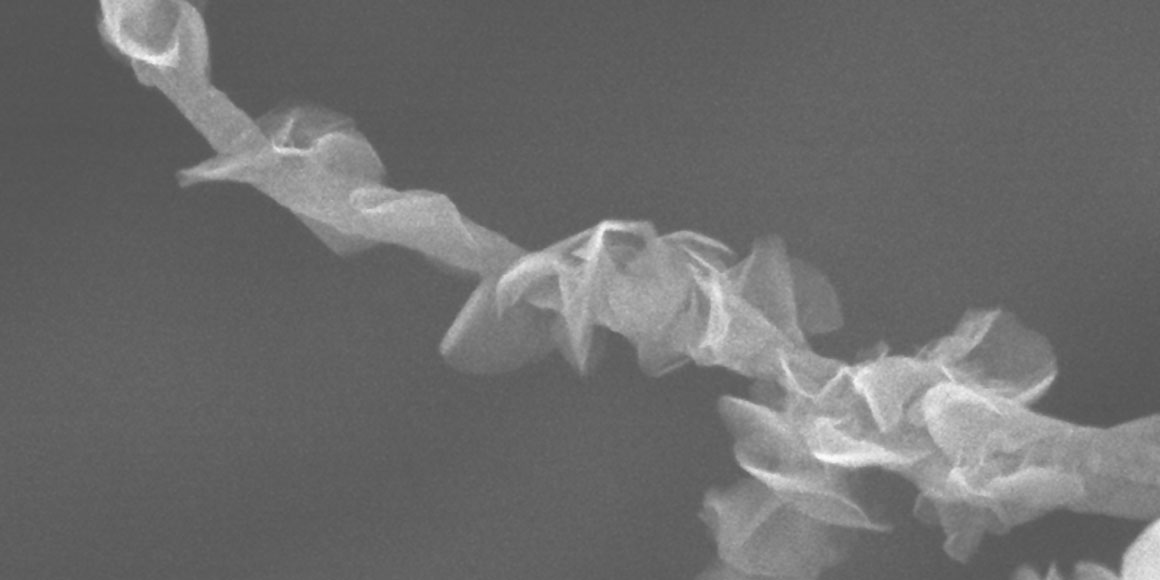Recently published research by Guoping Xiong, assistant professor of mechanical engineering, could help pave the way for a new generation of supercapacitors, capable of storing more energy and lasting longer than the existing technology.
Xiong and his collaborators have developed a new, bio-inspired design that increases the surface area of the electrode, enabling the supercapacitor to store more energy than similar sized devices. A paper describing the new design was published in February in Nature Communications.
"The electrode design was inspired by the structure and function of leaves on tree branches, and it is more than 10 times more efficient than other designs," said Xiong. "This bio-inspired electrode material design significantly enhances the surface area and mechanical stability, and therefore can store more charge in a fast and efficient manner with excellent cyclic stability."
Supercapacitors are energy storage devices able to build a charge and discharge power extremely quickly, but their adoption has been limited by the amount of energy they can store. Drawing inspiration from the structure of leaves on a branch, the researchers designed an electrode with graphene petals grown on tunnel-shaped carbon nanotube arrays.
The branching structure provides more space for the electrode to absorb energy-storing ions, enabling the new design to store and deliver the same amount of power as existing electrodes that are larger and heavier.
"We find inspiration in nature," Xiong said. "Leaves significantly increase the exposed surface area of a tree to absorb carbon dioxide from the environment for photosynthesis, and we have designed similar structures with nanoscale materials to attract more ions quickly and efficiently. Meanwhile, the structures are formed into tunnel-shaped arrays, which allow ions to move with much less resistance and deliver more energy than they would if the electrode surfaces were flat."
{{RelatedPrograms}}
Because supercapacitors are capable of delivering energy quickly, they are useful in applications that need power in short bursts, such as a camera flash, rather than the steady stream a typical battery delivers. Currently, electric vehicles are one key application for supercapacitors, most prominently in dynamic braking systems, where they can quickly store and then deliver the energy generated when a car stops and restarts. As the technology improves, supercapacitors could become as common as the household battery.
"Next, we want to develop new manufacturing processes to scale up the production of the bio-inspired structures for commercial applications," Xiong said.
The design draws on work Xiong conducted while a post-doctoral researcher at Purdue University, in collaboration with researchers at Central South University, China; Mississippi State University; University of California, Los Angeles; and Yangtze University, China.












